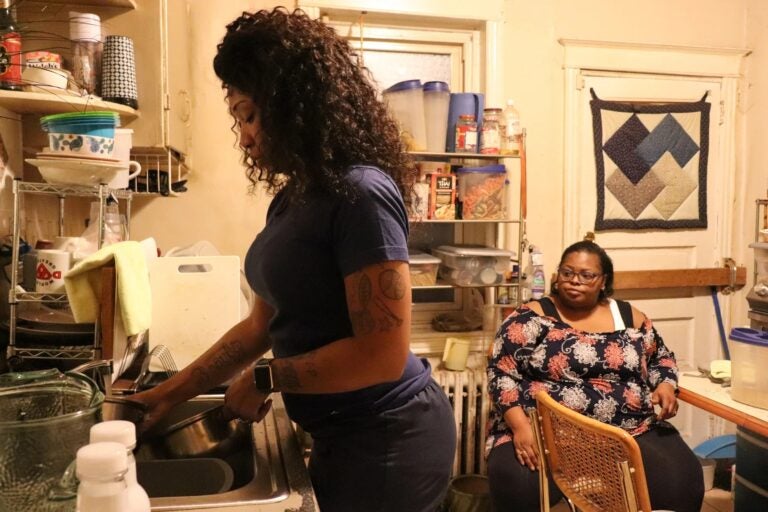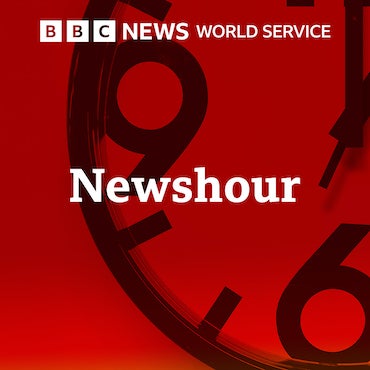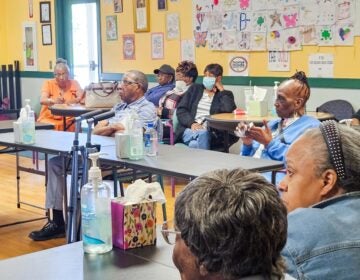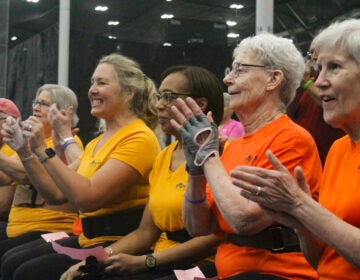Pennsylvania home health care agencies call for $370M in the state budget to avoid a looming care crisis
Home health care agencies say Pennsylvania’s rapidly aging population and low reimbursement payment rates set by the state are unsustainable.
Listen 1:15
File: Jasmine Henderson, a home health aide, washes dishes in Altonya Sheppard’s kitchen in 2021. (Madison Karas/WHYY)
From Philly and the Pa. suburbs to South Jersey and Delaware, what would you like WHYY News to cover? Let us know!
Pennsylvania in-home health care agencies that provide basic medical assistance and daily personal care to homebound patients say the industry is on a crash course toward collapse as the state sees a rapidly aging population.
Service providers say historic gaps in funding and worsening staffing shortages are exacerbated by low insurance reimbursement rates set by the state through public programs like Medicaid, which covers a significant amount of care.
It’s a crisis that lawmakers in Harrisburg can no longer ignore, advocates say. As state budget negotiations drag on through the summer, they’re calling on the legislature to include an additional $370 million this year to help pay for wage increases, new hires and expanded services.
“The need is so substantial because it’s been decades of chronic underfunding,” said Laura Ness, board president of the Pennsylvania Homecare Association. “But now, we have to start to really dig ourselves out of this hole.”
The Democratic-controlled state House of Representatives passed a budget bill in July and negotiations continue in the Republican-controlled Senate. The legislature already overshot the official deadline to pass a new fiscal year budget, which was June 30.
An aging state, high demand and low wages
An estimated 400,000 children and adults receive in-home care services, according to the Pennsylvania Homecare Association, which represents more than 700 home care, home health and hospital providers across the commonwealth.
In-home services can include skilled nursing, physical therapy, occupational therapy, respite care, meal preparation, help with daily activities like dressing and hygiene and more.
The work is vital in supporting aging seniors and people with disabilities or chronic illnesses who want to stay in their homes and communities, Ness said, but it can also be physically taxing on health providers and personal aides.
“You are transferring people and moving people around and ambulating them,” she said. “In a hospital or in a nursing home, there’s a huge amount of staff that can help with those tasks, but when you’re in the home, you’re the only one there.”
Many workers who provide this care often do so at low wages, Ness said. The average base wage for a personal assistance agency employee in Pennsylvania was $15.69 per hour in 2023, according to state data.
“We have folks that really love to do it and have been doing this work for decades, but then they’re oftentimes faced with the choice of, ‘I can no longer afford to do this work, I have to support my own family and myself,’” Ness said.
That’s made it difficult to attract and retain home care workers at a time when demand for services remains high, especially among seniors and elderly residents, said Ness. The trade organization estimates that statewide, more than 112,500 home care shifts go unfilled every month due to staffing shortages.
Some home care workers have left positions in Pennsylvania for ones in bordering states like New Jersey and New York, where they can earn, on average, a higher hourly wage, she said.
“And that also means that they can continue to do the work that they so love and that they have a vocation to do,” Ness said. “But they’re not serving Pennsylvanians.”
How home health care is paid for in Pennsylvania and budget negotiations
Medicaid reimbursement rates to home care agencies and providers are set by the state based on funding allocated in fiscal year budgets. Because of this payment structure, Ness said many companies and organizations are unable to increase prices or negotiate higher reimbursement rates on their own in order to help pay for additional staff, wage increases and service expansions.
An independent study commissioned by the Shapiro administration found that reimbursement fees and rates for some services have remained stagnant “for a decade or more” and “the longer a state waits to update a given fee schedule, the larger the eventual increase is going to be.”
Readjusting Medicaid reimbursement rates for home health care and personal assistance agencies to better align with competitive market rates would cost the state an additional $856 million, according to estimated fiscal impact figures.
Pennsylvania Homecare Association members said the $370 million they are asking the state to invest this year represents a 10% increase in reimbursement rates for personal assistance services and would be a down payment on the larger amount needed to fully support the industry.
“We know this is a tough budget year, but PHA’s ask is less than half of what was recommended,” wrote leaders of Philadelphia home care agencies in a July 15 letter to lawmakers.
Families could face limited options without access to home care
However, there has been little movement toward reaching that number, Ness said.
Gov. Josh Shapiro’s proposed budget only included a $21 million bump for wage increases among workers who care for adults with physical disabilities and seniors. The House version of the budget bill did not add any additional funding.
Ness said if home care shifts continue to go unfilled and staffing shortages escalate, the demand on the industry will become too great and families may have to resort to other options for their loved ones.
“That could mean that they go into a higher-cost setting like a nursing home earlier than they need to,” Ness said. “That means that maybe a parent or a daughter or a son is staying home and they are taking themselves out of the workforce to be able to care for these individuals in their home.”

Get daily updates from WHYY News!
WHYY is your source for fact-based, in-depth journalism and information. As a nonprofit organization, we rely on financial support from readers like you. Please give today.








